Copyright 2002 by Princeton University Press
Published by Princeton University Press, 41 William Street, Princeton, New Jersey 08540
In the United Kingdom: Princeton University Press, 3 Market Place, Woodstock,
Oxfordshire 0X20 1SY
All Rights Reserved
Library of Congress Cataloging-in-Publication Data
The war was you and me : civilians in the American Civil War / Joan E. Cashin, editor.
p. cm.
Includes bibliographical references and index.
ISBN 0-691-09173-0 (alk. paper) - ISBN 0-691-09174-9 (pbk. : alk. paper)
1. United StatesHistoryCivil War, 18611865Social aspects. 2. United StatesSocial conditionsTo 1865. 3. United StatesHistoryCivil War, 18611865Influence. I. Cashin, Joan E.
E468.9 .W28 2002
973.71dc21 2001036869
British Library Cataloging-in-Publication Data is available
https://press.princeton.edu/
eISBN: 978-0-691-21811-3
R0
Editors Acknowledgments

THIS BOOK is truly a collaborative effort, and I am delighted to thank the individuals who kindly helped me put it together. Gary Arnold of the Ohio Historical Society, Michael Meier of the National Archives, and Barbara DeWolfe and Don Wilcox of the William L. Clements Library at the University of Michigan generously assisted in locating documents and photographs. Megan Real was an unflagging research assistant, and Dave Johnsons computer wizardry was essential in preparing the volume for the publisher. Once again, I am grateful to Daniel Kornstein for his learned counsel and good advice.
Thomas LeBien, my superb editor at Princeton University Press, deserves special thanks. He shared our vision of the book, made astute editorial suggestions, and then steered it smoothly through production. I could not have asked for a better editor. I also appreciated the expertise of the capable staff at the Press, especially Linny Schenck and Maura Roessner. The contributors, all of them consummate professionals, were a pleasure to work with and talk to about history.
The War War You and MeEditors Introduction
JOAN E. CASHIN

WALT WHITMAN, a civilian who worked as a U.S. army nurse during the Civil War, wrote about the mighty conflict for the rest of his life, trying repeatedly in poetry and prose to fathom its impact on the country. Soon after the war closed, he penned the lines that form this books epigraph while visiting Lake Ontario, far from the scene of any battle. The quote is truly Whitmanesque in its acuity. He understood that the war involved all of the American people in its historic sweep, in the suffering and hardship it caused, and the solemn issues at stake, and he anticipated the furious debate over how it would be remembered. The scholarship on the war is enormous, larger than any other period in the nations history, and the literature includes many excellent titles on military history, biographies of famous politicians and generals, and work on soldiers in the ranks.
Despite the multiple contributions of these books, there is still a great deal to discover about civilian life. Noncombatants constituted the majority of the nations population, including the male population, and they provided much of the material supplies, financial resources, and information necessary to fight the war. Civilians also played a central role in the public discourse over the wars direction and larger meaning, debating each other and the men in the field. Furthermore, the unpredictable pace of battle sometimes blurred the line between soldier and noncombatant, as the fighting rolled across the Southern landscape (and in a few instances into the border states and the North) and uprooted thousands of people of both races. We do not know nearly enough about the people at the heart of the struggle, African Americans, most of whom were of course civilians.
This scholarly neglect is all the more striking in light of the inherent drama of the civilian experience. Southerners black and white lived through the breakup of their basic social and economic institutions, while Northerners of both races witnessed the reorganization of much of civilian society to fight the war, even as citizens of the border regions grappled with elemental questions of loyalty that reached into the family itself. The war inspired a host of innovations in American culture, in everything from public oratory to mourning customs. These transformations worked themselves out in the destinies of thousands of civilians in ways that scholars have scarcely begun to explore.
Fortunately for historians, the archives are bursting with documentation on this subject. Many civilians were self-conscious about the wars significance and produced a tidal wave of letters and journals, even as soldiers described numerous interactions with civilians in their writings, while hundreds of people left memoirs, published and unpublished, after the war ended. The national, state, and local governments created a tremendous body of records on civilians, including but not restricted to the Southern Claims Commission, the Freedmens Bureau Papers, pension files, the Dun and Bradstreet credit reports, the veterans census of 1890, and the WPA Narratives. Scholars have yet to exploit fully the nations newspapers or the massive photographic record for what they reveal civilians.
The essays in this book, which are all based on original research, add abundantly to our knowledge of the war. They treat men, women, and children, blacks and whites, from working-class, middle-class, and affluent backgrounds; some articles examine specific events, some discuss particular communities, and others take a biographical approach. They do not concern the home front per se, since we focus not on one geographic place but on civilians all over the country, from California to New England. Two essays provide fresh perspectives on the wars premiere events, the Battle of Gettysburg and the Lincoln assassination, one by describing free blacks who were kidnapped into slavery during the famous battle, and the other by raising new questions about Mary Surratts guilt. Despite the impressive variety of sources, methods, and arguments, some principal themes emerge.
Family and Community The war threatened social bonds in the North and the border states, as well as the South. These disruptions are visible in the community resistance to the draft, bolstered by political opposition, in the North; in the white families from border regions who were divided by the war, literally father against son; in one white familys blunt exchanges about their sons service with a black army unit; and in the speed with which the war politicized teenagers and children, including very young children, in a border state. This conflict pitted siblings and generations against each other, and before it was done shook the family, the fundamental social unit, to its core.
Gender The war unsettled, undermined, and sometimes destroyed traditional gender roles, in all regions, forcing people to reconsider their assumptions about appropriate behavior for men and women of both races. This is manifest in disputes between female teachers and army officials regarding the treatment of newly emancipated Southern blacks; the phenomenal career of the first professional fund-raiser in American history, a white woman affiliated with the Republican Party; and the desperate struggles of Confederate widows in the wartime and postwar South. Some people welcomed these changes, some deplored them, and many may have perceived them as another example of the wars unintended consequences.

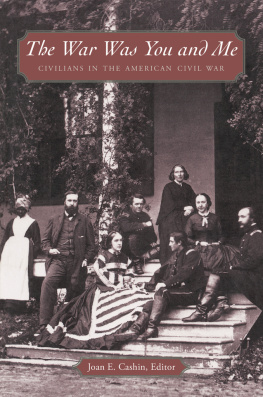

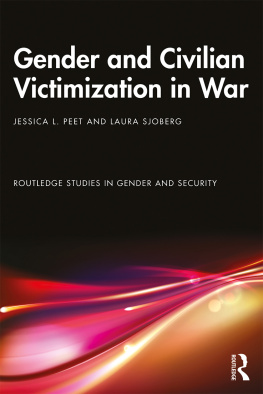
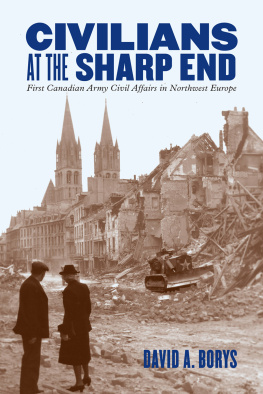
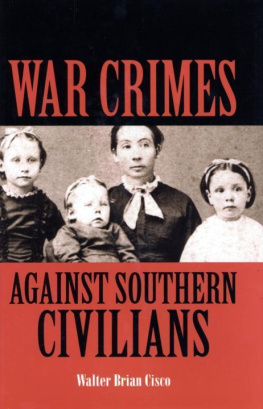
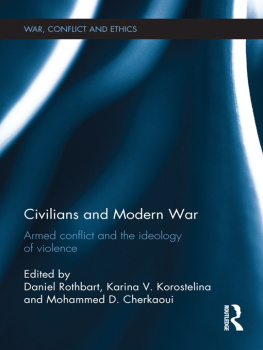

 THIS BOOK is truly a collaborative effort, and I am delighted to thank the individuals who kindly helped me put it together. Gary Arnold of the Ohio Historical Society, Michael Meier of the National Archives, and Barbara DeWolfe and Don Wilcox of the William L. Clements Library at the University of Michigan generously assisted in locating documents and photographs. Megan Real was an unflagging research assistant, and Dave Johnsons computer wizardry was essential in preparing the volume for the publisher. Once again, I am grateful to Daniel Kornstein for his learned counsel and good advice.
THIS BOOK is truly a collaborative effort, and I am delighted to thank the individuals who kindly helped me put it together. Gary Arnold of the Ohio Historical Society, Michael Meier of the National Archives, and Barbara DeWolfe and Don Wilcox of the William L. Clements Library at the University of Michigan generously assisted in locating documents and photographs. Megan Real was an unflagging research assistant, and Dave Johnsons computer wizardry was essential in preparing the volume for the publisher. Once again, I am grateful to Daniel Kornstein for his learned counsel and good advice. WALT WHITMAN, a civilian who worked as a U.S. army nurse during the Civil War, wrote about the mighty conflict for the rest of his life, trying repeatedly in poetry and prose to fathom its impact on the country. Soon after the war closed, he penned the lines that form this books epigraph while visiting Lake Ontario, far from the scene of any battle. The quote is truly Whitmanesque in its acuity. He understood that the war involved all of the American people in its historic sweep, in the suffering and hardship it caused, and the solemn issues at stake, and he anticipated the furious debate over how it would be remembered. The scholarship on the war is enormous, larger than any other period in the nations history, and the literature includes many excellent titles on military history, biographies of famous politicians and generals, and work on soldiers in the ranks.
WALT WHITMAN, a civilian who worked as a U.S. army nurse during the Civil War, wrote about the mighty conflict for the rest of his life, trying repeatedly in poetry and prose to fathom its impact on the country. Soon after the war closed, he penned the lines that form this books epigraph while visiting Lake Ontario, far from the scene of any battle. The quote is truly Whitmanesque in its acuity. He understood that the war involved all of the American people in its historic sweep, in the suffering and hardship it caused, and the solemn issues at stake, and he anticipated the furious debate over how it would be remembered. The scholarship on the war is enormous, larger than any other period in the nations history, and the literature includes many excellent titles on military history, biographies of famous politicians and generals, and work on soldiers in the ranks.